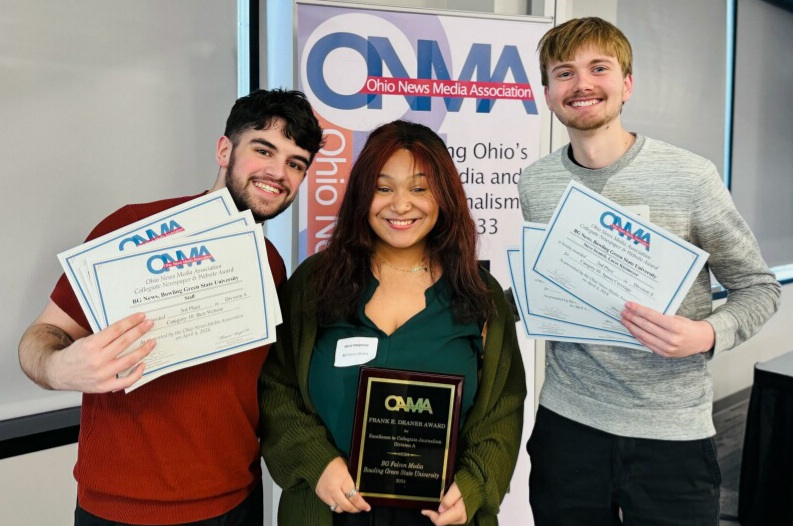There’s a lot to consider when choosing which caffeinated beverage will give an appropriate alertness without that jolt of jitters. Luckily for college students who count on caffeine for a quick pick-me-up, it’s generally accepted as safe by the Food and Drug Administration.
Jane Crandall, University Health Center nutrition counselor, said caffeine has many positive effects when consumed in the correct amounts.
“People feel like they need that extra little bit of a stimulant to get them thinking clearly … it helps stimulate your mind,” she said. “You can think quicker right before a test.”
The recommended daily amount of caffeine is 300-400 milligrams — equal to about three 8-ounce cups of coffee. Although it has benefits, Crandall said, caffeine can leave consumers feeling jumpy and overenergized.
“It [caffeine] has to be taken on an individual basis … because not everyone can tolerate it,” Crandall said.
Senior Stephanie Taylor said she started to feel the need for caffeine because of a heavy course load her junior year.
“It was the only way I could make it through my day,” she said. “It keeps me going.”
Taylor said she’s been called a caffeine addict because she drinks more than five cups of coffee a day.
“I have a cup of coffee in the morning, but it’s like a bowl of coffee,” she said. “And depending on how long of a day I’m going to have maybe I’ll make a pot of coffee later in the day.”
According to the Department of Health and Human Services Web site, regular brewed coffee typically has 85 milligrams of caffeine per 8-ounce cup. Adding one ounce of espresso to a drink adds another 40 milligrams of caffeine, the same amount as eight ounces of regular brewed tea. Soft drinks, another common caffeine source, range from 20-40 milligrams per eight ounces.
Overall, Crandall said, students can get the biggest bang for their buck from coffee.
Consuming energy drinks is a risky habit, Crandall said, because caffeine levels vary and can have as much as 300 milligrams per eight ounces. Red Bull has 74 milligrams of caffeine per eight ounces, close to a weak cup of coffee. A 16 ounce can of Monster has 160 milligrams; a can of Full Throttle has 144 milligrams.
Crandall said energy drinks are the least-favored caffeine source, in terms of safety, because they have many additives which are not well-regulated by the FDA.
“They often sneak other drugs into energy drinks besides caffeine …whether they’re good for you is really questionable,” she said. “Keep track of what other ingredients are in that energy drink and monitor how many milligrams of caffeine you’re actually consuming.”
Senior Kristen Kralik said she doesn’t drink energy drinks because they make her feel worse than drinking coffee.
“With energy drinks, I twitch … it’s bad,” she said. “My heart rate is probaby 30 times faster than it should be.”
Crandall said it is important for students to make sure their whole diet is healthy, because lack of sleep and nutrition can lead to fatigue — the initial cause for caffeine dependency. Students should also get their energy from eating healthy meals, she said, that contain energy-providing carbohydrates.
“Maybe they [students] are depending on caffeine to get them the energy and haven’t eaten a decent meal,” she said. “There’s also a nutrition factor in there.”
According to the FDA Web site, caffeine is not a required listing on the nutrition facts label of foods and beverages because it not a nutrient, but a naturally-occuring chemical found in tea leaves, cacao and coffee beans. However, if caffeine is added to a food or drink, it must be included in the listing of ingredients.
Crandall said moderation is key for caffeine cravings.
“Four to six cups [of coffee] a day is exceeding, so maybe they should re-evaluate what they’re doing … just to be safer,” she said.
Depending on an individual’s overall health, caffeine can have negative side effects and drawbacks. Caffeine is not safe for people who suffer from ulcers, irritable bowel syndrome or heart conditions such as high blood pressure.
“Overall I would say it’s a good thing in moderation,” Crandall said. “Caffeine can benefit but you have to be careful.”
“When you withdraw from coffee you can’t do it cold turkey,” Crandall said. “You can experience withdrawal symptoms … like headache, fatigue, irritability.”
However, if a caffeine guzzler wants to cut back on their caffeine, withdrawal symptoms shouldn’t last more than a few days and a caffeine-free lifestyle is achievable, Crandall said.


















